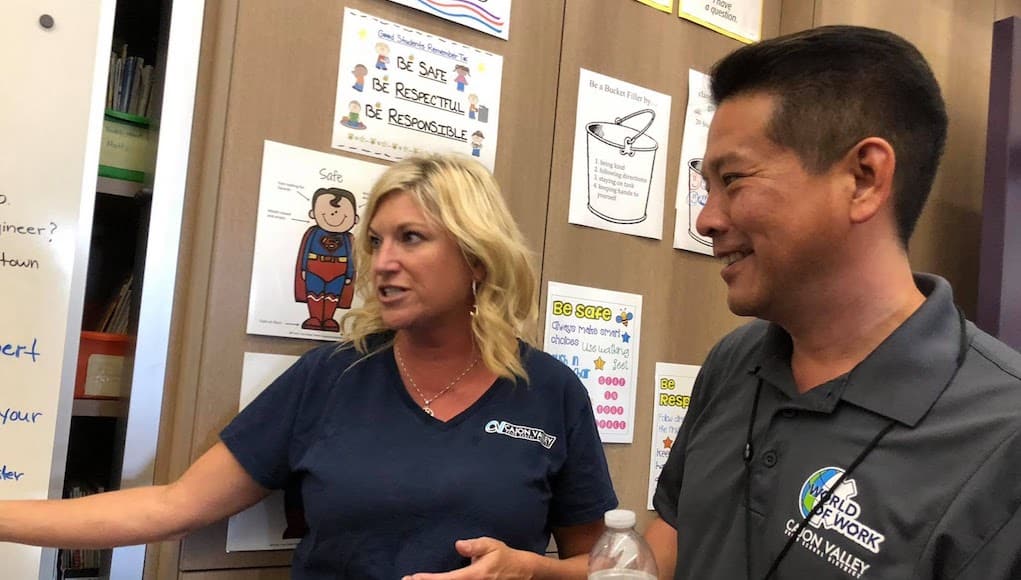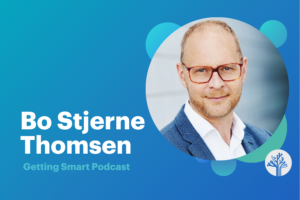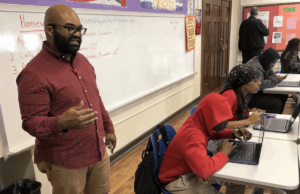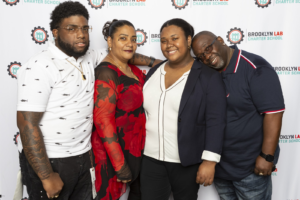The World of Work — in Elementary School

Civil engineers design roads, airports, and railroads; they make cities and towns better. Civil engineers are investigators, planners, and creative problem solvers. Civil Engineers use computers and drawing tools.
Kendra Olson’s first graders at Magnolia Elementary built a list of attributes of civil engineers. It was one of 54 career exploration experiences between kindergarten and eighth grade in the Cajon Valley Union School District (@cajonvalleyusd).
The district serves about 17,000 students in 10 elementary and middle schools 15 miles northeast of San Diego. Nearly three-quarters of the students live in or near poverty, and the region is home to many refugees.
With a mission of “Happy kids, healthy relationships, in a path to gainful employment,” the World of Work is the integrating framework for schools in Cajon.
David Miyashiro (@davidmiyashiro) joined Cajon as superintendent of the 27 school district six years ago. His first task was creating a culture of possibility.“We’ve just about got the culture right,” said Miyashiro with a smile.
He sees high skill, high wage jobs going unfilled in San Diego and want to give youth from the low-income communities east of the city a shot at getting or creating living wage employment.
Miyashiro hired a Qualcomm exec, Ed Hidalgo (@edhidalgoSD), to lead the district’s innovation agenda. Hidalgo knows first hand that if you can’t fill high demand, high wage jobs, they move.
After researching job frameworks, Hidalgo landed on one first proposed by John Holland sixty years ago. Popularly know by the acronym RISEC (for realistic, investigative, artistic, social, enterprising and conventional), a set of assessments help young people become aware of their unique strengths, interests, and values.
Cajon Valley learners move through four World of Work (#cvwow) experiences: exploration, simulation, meet a pro, and practice.
Surveys and World of Work experiences allow students to “name and claim a theme” which, according to Hidalgo, builds a powerful sense of agency.
“Students can’t aspire to jobs that they don’t know exist,” said Hidalgo.
Many of the “meet a pro” activities happen virtually through Nepris, a platform that connects industry professionals with classrooms.
After visiting a dam, Greenfield Intermediate students explored a playlist on Google Classroom, built a 3D model and recorded an explanation in SeeSaw. On Nepris, they engaged with engineers about water systems and wrote about the experience.

In kindergarten classrooms at Magnolia Elementary (above), students were studying social jobs like teaching. They used design software to illustrate potential classroom layouts. Second graders (below) studied the work of chefs.
The World of Work curriculum tools were commercialized by a local partner, Eddywhere, a cooperative that shares work-based learning resources.
Miyashiro most wants to change the measures of success in education from basic skills to wellbeing. “What parents want from us is to love and care for their children and help them dream about the future,” said Miyashiro.
“We partnered with Gallup last year both for employee and student engagement. Our goal is to make our district the best place to work for our employees and the best place to build hope and engagement for our students as well,” said Miyashiro.
Gallup research suggests that a one-point increase in engagement resulted in a six and eight point rise in reading and math achievement, respectively. As a result, Miyashiro is positioning the engagement measure as the most important metric.
“Before World of Work we just had basic stuff,” said Stewart, a fourth grader. “Now I have an idea of who I want to be. I want to be an entrepreneur and use my social skills to work with people.”
For more, see:
- How Can Children Aspire to Careers They Don’t Know Exist?
- 30 School Districts Worth Visiting
- Starting Career Education in Middle School
Emily Leibtag provided research for this post and it was originally published on Forbes.
Stay in-the-know with all things edtech and innovations in learning by signing up to receive the weekly Smart Update.









0 Comments
Leave a Comment
Your email address will not be published. All fields are required.